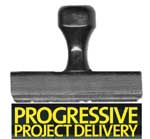 |
With over $1 trillion of construction put in place in the U.S. last year and over $4 trillion worldwide, one would think that project delivery techniques would keep pace with technology, education and construction methods. Sadly, that usually is not the case and improper, inadequate or almost nonexistent project delivery methods waste many billions of dollars a year.
Unless something goes radically wrong on a project, the amount of money wasted may never be known. An owner may know when it has the lowest bid, but that is only lowest among firms that choose to participate. Is there another firm out there that would have considered building the project had the delivery method, contractual terms and risk been different? Would costs have been lower?
California’s Oakland-San Francisco Bay bridge rebuild is a good example of what happens when few firms come to the party.. There are many projects like that.
Many public owners still cling to the classic design-bid-build project delivery method, partly due to legislation, fear of criticism for trying something new and the need to keep corruption, favoritism and politics out of the process. But the low-bid scenario also can set the stage for adversarial relationships, a sharp rise in change orders and claims and problems in project commissioning. These costs can be measured, but only later in the job.
The private sector is free to use any method and largely has moved from this model, preferring more negotiated-fee work and project delivery methods more closely matched to the owner’s need and project.
There are plenty of delivery tools to pick from—design-bid-build, design-build, construction management at-risk, CM for-fee, program management and emerging hybrids that combine elements of each. Picking the right one is tricky. Some used to be known as “alternative” project delivery methods, but they now are mainstream and enhancements are making them progressive.
Many in the industry support the concept that it needs a quantitiative basis for analyzing cost, schedule, quality and other key project attributes of various delivery systems and an understanding of how organization can deliver improved results. We agree. There is a science to selecting performance teams, even in a low-bid scenario, as Arizona State University researchers discovered.
There are many ways to improve project delivery. But the first step is to have an open mind on the choice of method. The next is to invest in front-end planning to make sure the project reaps the most benefit from the method selected. Those steps alone, almost certainly will give your project a progressive stamp.
(Photo Ilustration by Maritza C. Hurtado)

Post a comment to this article
Report Abusive Comment